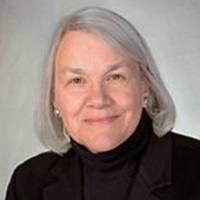Should You Opt for an Older or Younger Financial Adviser?
Do you want the wisdom that comes with age or the innovation that comes with youth? Or maybe you can have both, with an advisory team.


Age is a popular subject in the media these days, and we all know why. But age isn’t just debated at the national level about politicians. It’s also discussed closer to home about financial advisers.
If you begin working with a financial adviser when you first start your career, most likely you’ll have a financial adviser for 60 years or more through retirement. It’s unlikely to be the same individual. As Baby Boomers and older Gen Xers contemplate retirement, they’re probably wondering if their financial adviser is doing the same. That thought can be frightening, because our advisers know us so well. They know our hopes, our dreams, our goals and everything about our finances. If you’ve worked with your adviser for years, the thought of losing that individual and their constant, calming influence on your life is bound to be unsettling.
When a financial adviser has had a long career, at some point they’re considered “too old.” On the other hand, an individual who just entered the industry may be considered “too young.” Fortunately, this is an industry that employs both mature and less-seasoned individuals and reaps the rewards of embracing age diversity. Consider the following:
From just $107.88 $24.99 for Kiplinger Personal Finance
Become a smarter, better informed investor. Subscribe from just $107.88 $24.99, plus get up to 4 Special Issues

Sign up for Kiplinger’s Free Newsletters
Profit and prosper with the best of expert advice on investing, taxes, retirement, personal finance and more - straight to your e-mail.
Profit and prosper with the best of expert advice - straight to your e-mail.
With age comes wisdom. When it comes to personal finance, the more things change, the more they stay the same. Look at the stock market: Every significant directional change, be it a rally or a downturn, is triggered by some current economic, political or global event. Upon closer examination, these new events frequently exhibit similarities to past occurrences. More-seasoned advisers who have experienced a similar event in the past are often in the best position to recognize the similarities and have the most valuable advice of how to move forward and about the potential outcomes.
With youth comes innovation. The current stage of the information age is the era of machine learning, a term that refers to artificial intelligence (AI). In 1962, E.M. Rogers introduced the Diffusion of Innovations Theory, which described how new innovations are diffused, or spread, widely among a population or group. Although Rogers didn’t specify age as a determinant of adoption, others have suggested that younger individuals are more likely to adopt new innovations. The youngest members of the workforce, Millennials (1981-1996) and Gen Z (1997-2012), are digital natives. As such, they bring a unique perspective to the financial services industry because they have come of age during a tech revolution, making them open to new investment opportunities with growth potential.
In reality, the financial services industry doesn’t have a “too old or too young” problem anymore, because we have advisory teams.
The benefits of a financial advisory team
Today, the financial services industry estimates that more than half of financial advisers work on teams, and across the industry, that number is increasing. Here are three reasons a team makes sense:
- Continuity. Loss of continuity is one of a client’s main concerns when they think about losing their financial adviser. If your adviser is a member of a team, they are part of a group that share a mission and vision. While you will have a new individual you’ll get to know, everything else should be the same.
- Consistency. Financial advisory team members agree upon the team’s investment philosophy, their roles, the tools they use to make recommendations and the way they measure client success.
- Specialization. The complexity of personal finance makes it difficult for one person to be an expert in everything. The team structure allows individuals to become in-depth experts in one or more areas of expertise. The breadth of the expertise enables them to successfully advise many types of clients and consult with their colleagues on complex client situations.
Finally, many financial advisers who aren’t on teams have informal agreements with other financial advisers who will take over their practice in the event of an emergency. If you work with an adviser who’s a sole practitioner, ask if they’ve entered into that type of agreement with another adviser. If they have, ask to meet that individual so you aren’t taken by surprise.
The views expressed are subject to change and do not necessarily reflect the views of Thornburg Investment Management, Inc. This information should not be relied upon as a recommendation or investment advice and is not intended to predict the performance of any investment or market.
This is not a solicitation or offer for any product or service. Nor is it a complete analysis of every material fact concerning any market, industry, or investment. Data has been obtained from sources considered reliable, but Thornburg makes no representations as to the completeness or accuracy of such information and has no obligation to provide updates or changes. Thornburg does not accept any responsibility and cannot be held liable for any person’s use of or reliance on the information and opinions contained herein.
Investments carry risks, including possible loss of principal.
Related Content
- Is Your Financial Adviser Doing a Good Job for You?
- Eight Times You Should Contact Your Financial Adviser
- A Virtual Financial Adviser Could Be the Right Fit for You
- Can I Hire a Financial Adviser to Manage My 401(k)?
- Should I Pay a Financial Adviser an Assets Under Management Fee?
Profit and prosper with the best of Kiplinger's advice on investing, taxes, retirement, personal finance and much more. Delivered daily. Enter your email in the box and click Sign Me Up.

Jan Blakeley Holman is director of advisor education at Thornburg Investment Management. She is responsible for identifying and creating advisor education programs that support financial advisors as they work with their clients and prospects. Jan has spent more than four decades in the financial services industry. Over the course of her career, she’s served as a financial advisor, an advisor to financial advisors and a financial services corporate executive. Visit Thornburg’s website to enjoy more of Jan’s articles and podcasts.
-
 Are T-Mobile's Prepaid Perks a Home Run or a Strikeout?
Are T-Mobile's Prepaid Perks a Home Run or a Strikeout?T-Mobile's prepaid lineup promises MLB.TV, T-Mobile Tuesdays and hotspot data. But do the perks make it worth switching?
-
 Verizon Home Internet Is Offering Free Tech to New Customers
Verizon Home Internet Is Offering Free Tech to New CustomersVerizon’s latest home-internet promotion includes free tech, but the real savings depend on pricing, speed needs and how long you stay.
-
 Retirees in These 7 States Could Pay Less Property Taxes Next Year
Retirees in These 7 States Could Pay Less Property Taxes Next YearState Taxes Retirement property tax bills could be up to 65% cheaper for some older adults in 2026. Do you qualify?
-
 5 Smart Things to Do With Your Year-End Bonus, From a Financial Professional
5 Smart Things to Do With Your Year-End Bonus, From a Financial ProfessionalAfter you indulge your urge to splurge on a treat, consider doing adult things with the extra cash, like paying down debt, but also setting up a "fun fund."
-
 Are You a Gen X Investor? Here's How You Can Protect Your Portfolio From an AI Bubble
Are You a Gen X Investor? Here's How You Can Protect Your Portfolio From an AI BubbleAmid talk of an AI bubble, what's the best course of action for investors in their 50s and 60s, whose retirement savings are at risk from major market declines?
-
 Hey, Retirees: Put Your Charitable Gifts in a Donor-Advised Fund (and Enjoy Your Tax Break)
Hey, Retirees: Put Your Charitable Gifts in a Donor-Advised Fund (and Enjoy Your Tax Break)A donor-advised fund is a simple (really!), tax-smart strategy that lets you contribute a large, tax-deductible gift now and then distribute grants over time.
-
 If You're a U.S. Retiree Living in Portugal, Your Tax Plan Needs a Post-NHR Strategy ASAP
If You're a U.S. Retiree Living in Portugal, Your Tax Plan Needs a Post-NHR Strategy ASAPWhen your 10-year Non-Habitual Resident tax break ends, you could see your tax rate soar. Take steps to plan for this change well before the NHR window closes.
-
 Could Target-Date Funds With Built-In Income Guarantees Be the Next Evolution in Retirement Planning?
Could Target-Date Funds With Built-In Income Guarantees Be the Next Evolution in Retirement Planning?With target-date funds falling short on income certainty, retirement plans should integrate guaranteed income solutions. Here is what participants can do.
-
 Your Year-End Tax and Estate Planning Review Just Got Urgent
Your Year-End Tax and Estate Planning Review Just Got UrgentChanging tax rules and falling interest rates mean financial planning is more important than ever as 2025 ends. There's still time to make these five key moves.
-
 What Makes This Business So Successful? We Find Out From the Founder's Kids
What Makes This Business So Successful? We Find Out From the Founder's KidsThe children of Morgan Clayton share how their father's wisdom, life experience and caring nature have turned their family business into a respected powerhouse.
-
 I'm a Financial Adviser: The Fed's Rate Cuts Could Have Impacts You Might Not Anticipate
I'm a Financial Adviser: The Fed's Rate Cuts Could Have Impacts You Might Not AnticipateUnderstanding how lower interest rates could impact your wallet can help you determine the right financial moves to make.